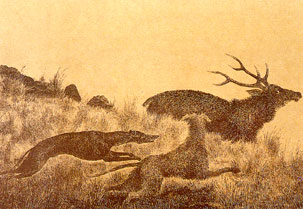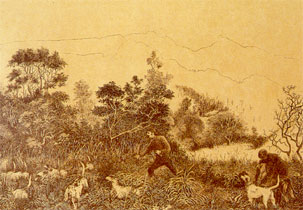

 By whatever name, the plains soon became a much-favoured hunting ground. Parties of gun-toting sportsmen rode up the bridle paths accompanied by the barking of dogs named Bluebeard, Lucifer and Bran to hunt sambars, boar and the occasional leopard. Sir Samuel Baker, who in later life became famous as a great Nile explorer, was best known in Sri Lanka for his hunting exploits. Earning his local fame as the second-leading killer of elephants during his time, Baker has a waterfall named after him.
By whatever name, the plains soon became a much-favoured hunting ground. Parties of gun-toting sportsmen rode up the bridle paths accompanied by the barking of dogs named Bluebeard, Lucifer and Bran to hunt sambars, boar and the occasional leopard. Sir Samuel Baker, who in later life became famous as a great Nile explorer, was best known in Sri Lanka for his hunting exploits. Earning his local fame as the second-leading killer of elephants during his time, Baker has a waterfall named after him.
Until it fell into the abyss below, affixed upon a rock on Kirigalpotte was a plaque commemorating the death of Hubert Arthur Grigg. A planter at Agrapatne, Grigg had often hunted in Hortons. One of his much-loved dogs had died in a skirmish with a leopard on this peak. It was Grigg's wish to lie with his dog.
 On his death in Paris in 1931, his ashes were duly flown to Ceylon and taken to the peak by the spiritedly fortified members of the Horton Plains Hunt Club who found themselves carrying the parson as well!
On his death in Paris in 1931, his ashes were duly flown to Ceylon and taken to the peak by the spiritedly fortified members of the Horton Plains Hunt Club who found themselves carrying the parson as well!
ANGLING ALSO DREW MANY to the plains. The streams were stocked with trout, and solitary fisherman still spend hours by the black pool of Belihul Oya. Thomas Farr was a keen fisherman of that era and he did much to develop the plains and make them accessible. The house he built in 1901 is today the only rest house in the vicinity It is named after him, and so is a fishing pool. His ashes too were taken to the summit of Kirigalpotte and, scattered by the wind, they came to rest upon the ground he had walked and loved. Continued...
